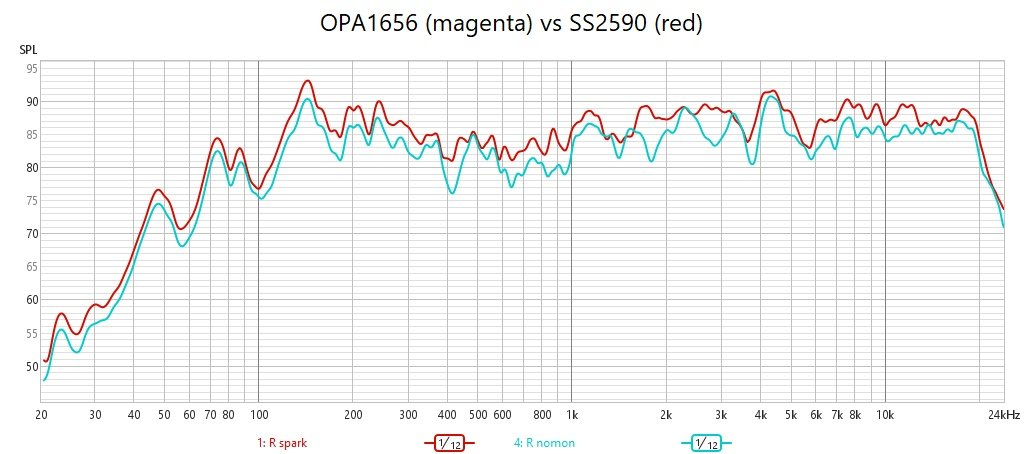murrays
100+ Head-Fier
- Joined
- Jan 10, 2009
- Posts
- 302
- Likes
- 42
Quote:
your EF2 runs off a wall wart, LT1363/4 has a low PSRR...it will not sound good.
Try AD797B/LT1028AC/ADA4627-1B/OPA827/etc?
That's not so much of a problem if the amp has good local regulation (does it?). Bear in mind that the LT1363 has a PSRR is 90 to 100 dB.
A lot of the point of PSRR is not supply ripple rejection, but rejection of voltage changes due to reflection of the changing output current.
If you're having to rely on really high PSRR because of large levels of noise and fluctuations at the power inputs then your circuit design is lacking. Good power supply filtering and local HF bypassing will eliminate most of that.
A good test is to measure (or even better - listen to) the AC voltages on the power supply pins of the op-amp. Ideally there should only be DC (zero hertz) but it can be a real eye-opener to find that you are feeding audio back into the power supply inputs. Even a high PSRR won't block all of that.





















